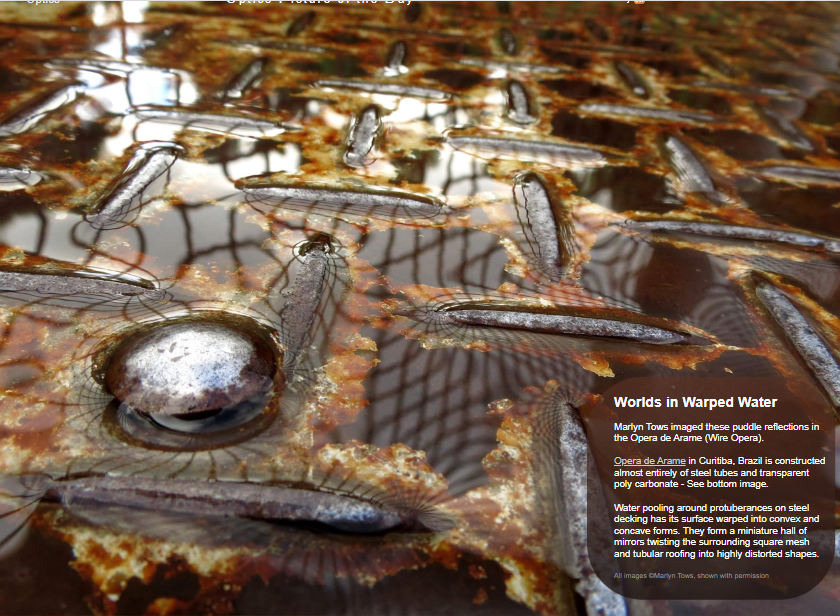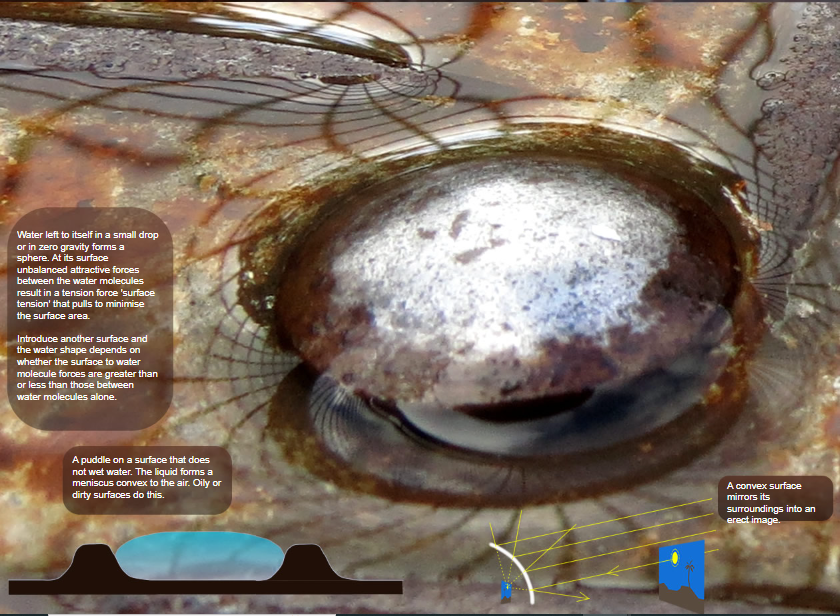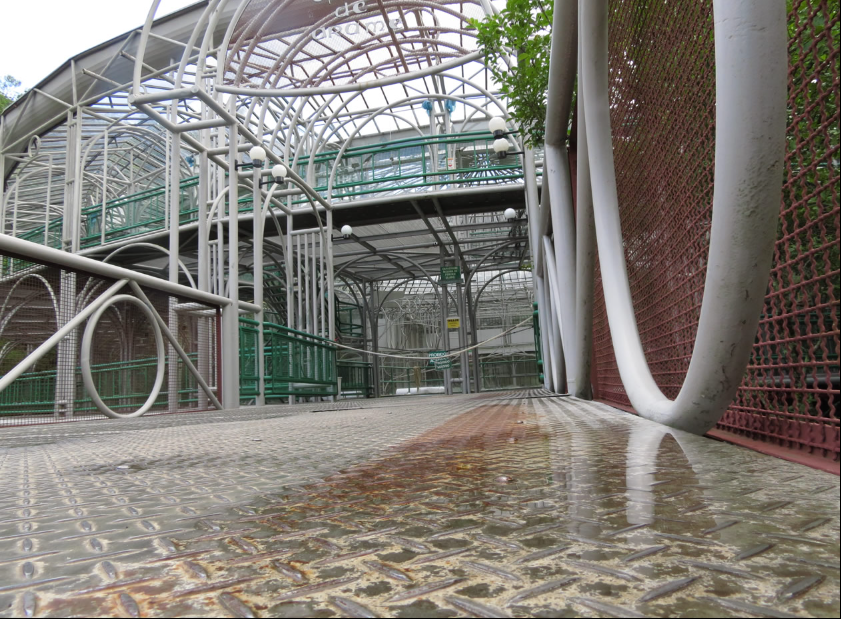Wire Opera Reflections, Curitiba, Brazil - OPOD
Wire Opera Reflections, Curitiba, Brazil - OPOD
The Wire Opera in Curitiba, Brazil is a captivating architectural marvel constructed primarily of steel tubes and transparent polycarbonate. One of the intriguing features of this structure is the mesmerizing reflections created by water puddles on its steel decking. These reflections distort the surrounding square mesh and tubular roofing, forming a miniature hall of mirrors. In this blog post, we will explore the fascinating phenomenon of water surface tension and how it interacts with different surfaces to create these unique reflections.
When water is left undisturbed in a small drop or in zero gravity, it naturally forms a spherical shape. This is due to the unbalanced attractive forces between water molecules, which create a tension force known as "surface tension" that pulls to minimize the surface area. However, when another surface is introduced, the shape of the water depends on whether the forces between the surface and water molecules are greater or less than those between water molecules alone.
If the surface does not wet water, such as an oily or dirty surface, a convex meniscus is formed. This means that the liquid forms a rounded shape that bulges outwards towards the air. On the other hand, if the surface attracts water and is wetted, a concave meniscus is formed. This occurs when the water climbs up a slope on the surface and creates a concave shape that dips downwards towards the air.
Now, let's apply this understanding to the water puddles on the steel decking of the Wire Opera in Curitiba. The protuberances on the steel decking cause the water to pool and create warped surfaces with both convex and concave forms. These warped surfaces then act as mirrors, reflecting and distorting the surrounding square mesh and tubular roofing into highly distorted shapes. The exact nature of the reflections depends on whether the water menisci on the steel decking are concave or convex towards the air.
The interplay between the water surface tension and the various surfaces in the Wire Opera creates a visually stunning effect. It gives the impression of multiple worlds coexisting within the warped water puddles, each with its own unique and distorted reflection. These reflections add an extra dimension of beauty and intrigue to the already impressive architectural design of the Wire Opera.
In conclusion, the Wire Opera in Curitiba, Brazil is not only a remarkable architectural masterpiece but also a playground for atmospheric optics. The reflections created by water puddles on its steel decking showcase the fascinating behavior of water surface tension and its interaction with different surfaces. The distortions and mirror-like effects formed by these reflections add a touch of magic to the overall ambiance of the Wire Opera, captivating visitors and providing them with a truly immersive visual experience.

Worlds in Warped Water
Marlyn Tows imaged these puddle reflections in the Opera de Arame (Wire Opera).
Opera de Arame in Curitiba, Brazil is constructed almost entirely of steel tubes and transparent poly carbonate - See bottom image.
Water pooling around protuberances on steel decking has its surface warped into convex and concave forms. They form a miniature hall of mirrors twisting the surrounding square mesh and tubular roofing into highly distorted shapes.
All images ©Marlyn Tows, shown with permission

Water left to itself in a small drop or in zero gravity forms a sphere. At its surface unbalanced attractive forces between the water molecules result in a tension force 'surface tension' that pulls to minimise the surface area.
Introduce another surface and the water shape depends on whether the surface to water molecule forces are greater than or less than those between water molecules alone.
A puddle on a surface that does not wet water. The liquid forms a meniscus convex to the air. Oily or dirty surfaces do this.
A convex surface mirrors its surroundings into an erect image.

Here the surface attracts water, it is wetted. The water climbs up a slope and forms a concave meniscus. Clean glass has concave, climbing, menisci.
A surface concave towards the air forms an inverted image
Are the water menisci on the steel decking concave or convex towards the air?

Note: this article has been automatically converted from the old site and may not appear as intended. You can find the original article here.
Reference Atmospheric Optics
If you use any of the definitions, information, or data presented on Atmospheric Optics, please copy the link or reference below to properly credit us as the reference source. Thank you!
-
<a href="https://atoptics.co.uk/blog/wire-opera-reflections-curitiba-brazil-opod/">Wire Opera Reflections, Curitiba, Brazil - OPOD</a>
-
"Wire Opera Reflections, Curitiba, Brazil - OPOD". Atmospheric Optics. Accessed on November 26, 2024. https://atoptics.co.uk/blog/wire-opera-reflections-curitiba-brazil-opod/.
-
"Wire Opera Reflections, Curitiba, Brazil - OPOD". Atmospheric Optics, https://atoptics.co.uk/blog/wire-opera-reflections-curitiba-brazil-opod/. Accessed 26 November, 2024
-
Wire Opera Reflections, Curitiba, Brazil - OPOD. Atmospheric Optics. Retrieved from https://atoptics.co.uk/blog/wire-opera-reflections-curitiba-brazil-opod/.